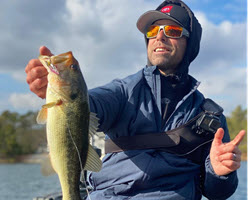
Here we go, guys. We all know that spring is almost here. That’s a good thing, but it also presents us with problems — wild weather and extreme conditions. On Monday it might be a picture-perfect day, but on Tuesday it’ll be spitting ice and snow.
When that happens I reach for the one bait I know they’ll eat — a hair jig. I’m talking about when all of the standard finesse baits and techniques don’t get you even one bite. The thing is, though, about hair jigs is that no lure made has more small, seemingly insignificant differences to them that turn out to be major things when you’re fishing.
So, I’m going to sound technical and super detailed in this blog. That’s necessary, though, so pay close attention and read everything carefully.
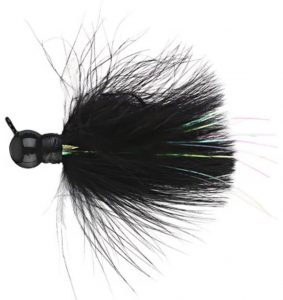
We’ll start off with the two kinds of material that most hair jigs are made from, marabou and synthetic fibers. In general marabou is heavier and less buoyant than synthetics, but they both have advantages that we’ll talk about as we go along.
When it comes to weight I carry a whole bunch of sizes from 1/32 ounce all the way up to 1/4 ounce. My most often used sizes are 1/6 and 1/8 ounce.
Head design matters. I carry two basic styles. One has a 60-degree eyelet that’s perpendicular to the hook point. It’s at its best in cover. The angle of the eye and the fact that it’s flat from the hook point makes it come over cover better. The other type has an eyelet that’s 90 degrees off the head and it’s in line with the hook point. That makes it better for more open water situations and for swimming.
As far as color is concerned I really only carry three hues. The first is black or brown. They make great imitations for larva in the water and for crawfish. My second group is white. I use these when the forage is a minnow of some sort. My last group is a kind of yellow. They make for shock value or for when I want more visibility.
My marabou jigs are made by VMC. They’re called the Dominator Jig. They come standard with a 60-degree line tie.
I use three basic techniques when I’m fishing my hair jigs. The first one I call The Line Watcher. It’s for when the fish are lethargic, holding right on the bottom. You’ll know that’s what’s happening because they’ll have mud on their bellies, and they’re usually around cover so I go with a 60-degree design on my jig. Marabou fiber is best for this one.
The deal here is to keep your jig right on the bottom and move it forward real slow. I don’t care how slow you’re bringing it back, you’re going too fast. Slow Down! And, when you set the hook do it with the reeling method — lean back with your rod up high and reel at the same time.
My second technique is called The Steady Wind. All I do here is make my cast, count my jig down to where the fish are and swim it back with a steady crank of the reel handle. A 90-degree line tie is what you want here. The Steady Wind will work with either a marabou or a synthetic fiber.
The last technique I’m going to discuss — well, almost the last — is The Jerkbait Retrieve. You fish this one just like you would a hard jerkbait. Make a cast, let your jig fall to where the fish are, bring it back with a steady retrieve, stop it occasionally and twitch it a couple of times before you start your steady retrieve again.
This technique works best with a 90-degree line tie and synthetic fibers. It’ll swim better and stay up better between twitches. And, speaking of the twitch, make sure you change the cadence of everything every 10 casts. That matters, just like it does with a hard jerkbait.

BONUS TECHNIQUE: Stick a tiny piece of plastic stickbait on the shank of the hook. I use the Berkley Powerbait Maxscent The General Worm. I cut the last inch off of it. This does two things. The first is that it adds a little weight to the jig which makes it cast easier and farther. The second is that when I slip it all the way up the shank and against the head of the jig it flares the fibers out. That gives them more movement.
I use the same rod, reel and line for all of these techniques. I want long casts so I want a long rod and a big spinning reel. My rod is an Abu Garcia IKE Finesse Series Spinning Rod. They come in various lengths. I much prefer the medium action 7 foot, 8 inch model.
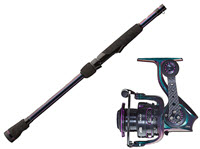
I use a 30 size Abu Garcia REVO IKE Spinning Reel, but the 30 size REVO MGX model is first-class, too. The bigger reel, with its bigger spool, will let you make longer casts with less effort.
My line is braid to fluorocarbon. I prefer 8 or 10-pound-test Berkley X9 Braided Line in Crystal. My leader is between 3 and 5 feet long and it’s made with 4 to 8-pound-test Berkley Trilene 100% Fluorocarbon.
When you’re up against it this year try the ultimate, last resort lure: A hair jig.
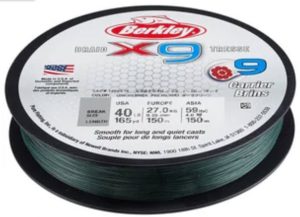
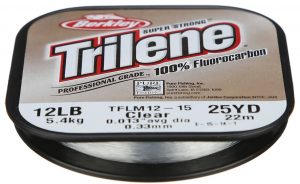
Hear Mike talk about fishing in extreme conditions.
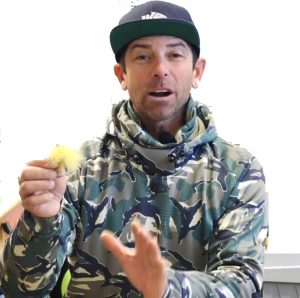
Like Ike on Facebook, and follow him on Instagram for fishing and fun content.
Subscribe to Mike’s YouTube channel, Going Ike, to ensure you see every adventure video.
Return to Mike Iaconelli’s website
















